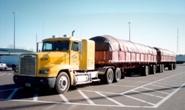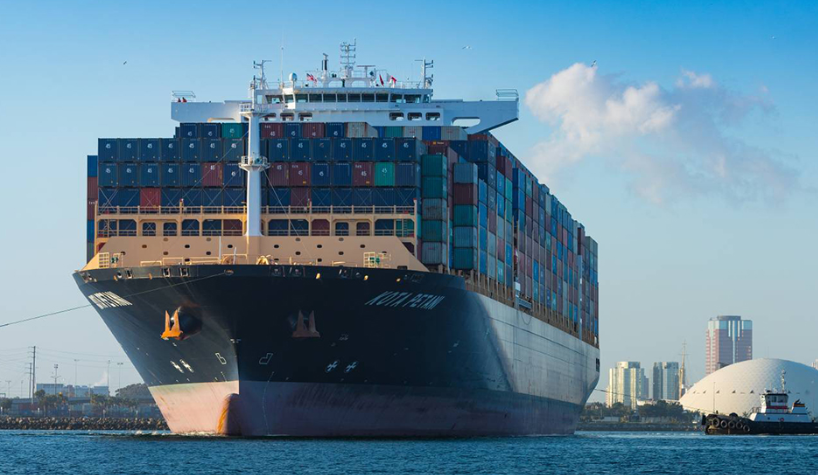Logistics

September 17, 2015
Logistics Report for September 2015
Written by Sandy Williams
Freight rates for seaborne cargo continue to remain low said MID-SHIP in their Sept. 16 report. Trade has fallen due to weak global economies and the downturn in China, triggering lower commodity prices and freight rates.
Oversupply of vessels eased over the summer as many were scrapped and new orders decreased. The respite was short lived, however, as MID-SHIP reports 250-275 capesize vessels are on order with half scheduled for delivery in the next 12 months. The influx of new ships will cause a dramatic drop in freight rates for Capes that could impact the entire market, says MID-SHIP.
The Baltic Dry Index showed a slight increase in the last few days, ending at 814 on Wednesday, Sept. 16. The Index was down 28.65 percent from a year ago the BDI tracks shipping rates for dry bulk cargos like iron ore, coal and grain and is considered a barometer for global steel trade.
Barge
Grain season has begun and with its arrival the seasonal spike in barge rates. MID-SHIP reports that rates are lower than last year, trading at 425 percent of the benchmark tariff compared to 600 percent last year. Northbound shipments of semi-finished steel and salt have been at usual levels so far, unlike a year ago when southbound freight was met by solid demand moving north.
Low water conditions are present on much of the river system says MID-SHIP, especially on the lower Mississippi south of Memphis. Tow sizes and loads have been reduced to accommodate narrow passage and draft depth. Several groundings have occurred recently, disrupting traffic and slowing navigation.
The Arkansas River Montgomery Point lock is closed to all traffic through October 14. The channel that bypasses the lock is currently in use but water levels are expected to drop below the 4.5 foot mark by October 5 which will eliminate all access to any of the ports on the Arkansas River from the Mississippi. Lock closures and delays are also reported on the Ohio River at Lock 52 and on the Port Allen Route of the Gulf Intracoastal Waterway West.
Trucking
Legislation in Congress proposes to permit individual states the flexibility to allow six-axle trucks to carry up to 91,000 pounds, up from the current maximum of 80,000 pounds. The bill introduced by Rep. Reid Ribble (R-Wi) is entitled the Safe, Flexible, and Efficient Trucking Act.
“The U.S. population has almost doubled since our Interstate highway system was built, and demand for freight shipping is only going up,” Ribble said in a statement. “The SAFE Trucking Act will help us safely move more of the things Americans want with fewer trucks taking up space on the road, and it is based on data to ensure that truck stopping times and pavement wear are as good or better than our current trucks.”
Thomas J. Gibson, AISI president and CEO, agrees that the proposal will improve efficiency while maintaining safety.
“With nearly 70 percent of all US freight tonnage moved by trucks and overall freight tonnage expected to grow to nearly 25 percent, truck weight reform needs to be included in the surface transportation reauthorization legislation when it goes before the House this fall,” said Gibson. “Like many manufacturers, the steel industry utilizes all modes of transportation to move goods, but steel products moved by truck can easily reach current federal weight limits before they maximize truck capacity. AISI has long-supported this legislation to improve efficiency and safety, and lower logistical costs.”
DAT Trendlines reports flatbed rates declined 1₵ during the week ending Sept. 12, to $2.03 per mile despite demand picking up during the Labor Day holiday weekend. Rates were highest in the Northeast at $3.32 per mile and lowest in the Los Angeles area at $1.78. Load to Truck ratio increased 13 percent from 10.1 to 11.3 loads per truck.
Diesel fuel declined 1.7 cents per gallon to $2.517 as of Sept. 16, dropping $1.28 below its cost a year ago. Fuel surcharges are expected to range from $.32 to $.34 per one way miles.
Rail
The Association of American Railroads (AAR) reported rail traffic for the week ending Sept. 12 was down 11.9 percent compared to a year ago. Grain was the only carload commodity that increased year over year, up 3.6 percent to 17,897 carloads. Rail shipments of metallic ores and metals were down 27.5 percent to 20,538 carloads. Year to date, cumulative carloads and intermodal units decreased 1.1 percent from 2014.
Great Lakes
The Lakes Carriers Association reports that August iron ore shipments on the Great Lakes and St. Lawrence Seaway decreased 19 percent year over year to 5.9 million tons. High levels of steel imports continue to impact the trade, said the Association. Three vessels, with a combined per-trip capacity of more than 200,000 tons, were also out of commission for repairs. One of the 1000 foot vessels was back in service on August 28 and the two others are expected to return by Sept. 20.
Shipments from US ports totaled 5 million tons, a decrease of 26.5 percent from a year ago. Canadian ports in the Seaway nearly doubled shipments to 921,000 tons. For the first eight months of 2014, 33.5 million tons of iron ore were shipped on the Lakes/Seaway, almost the same as last year.





